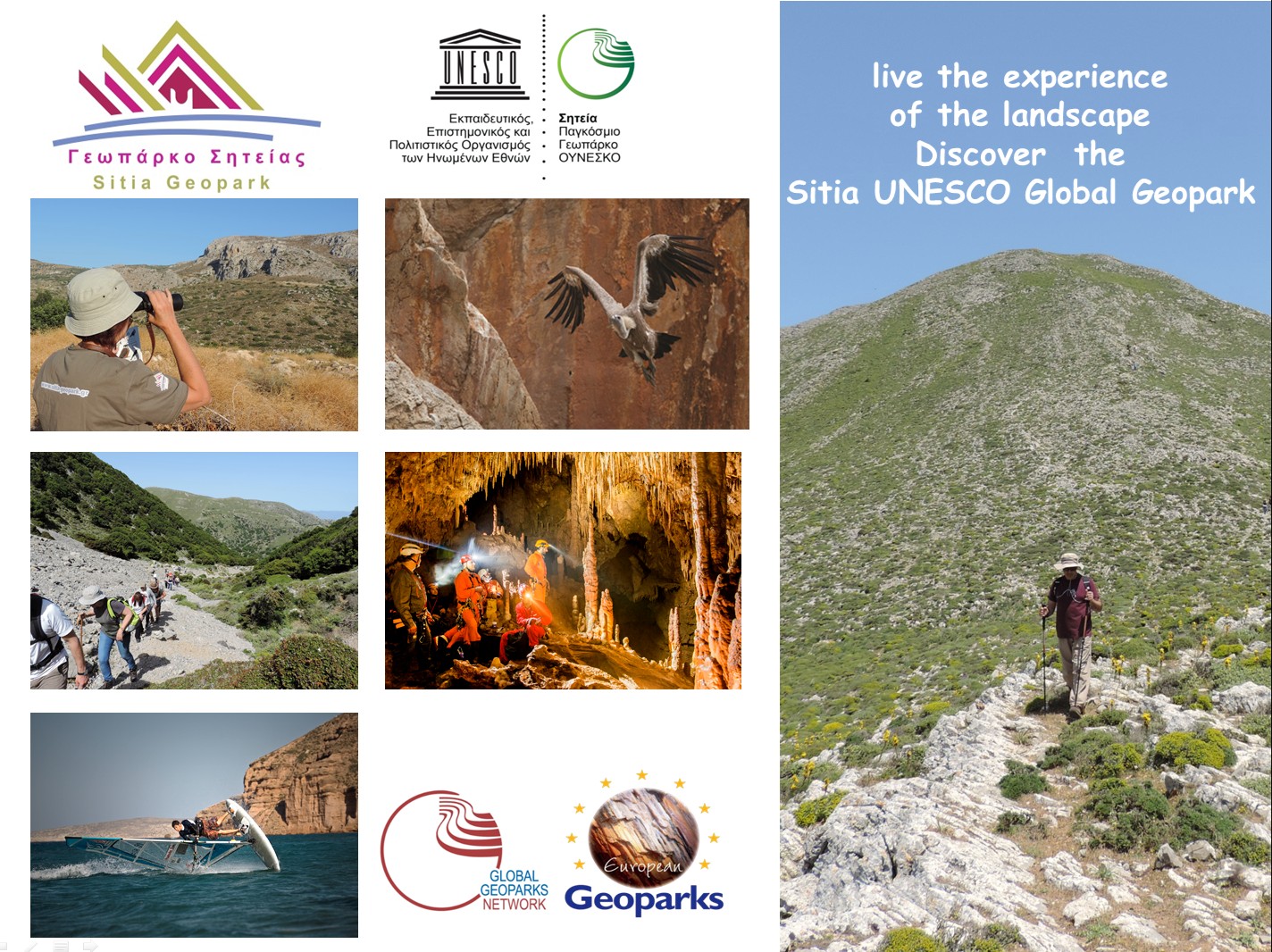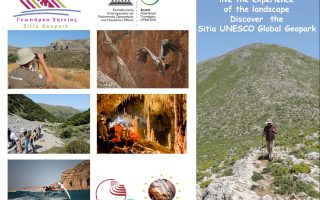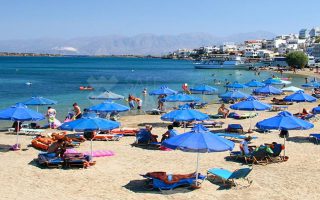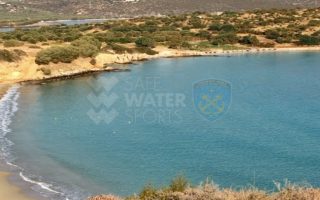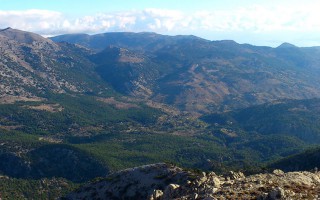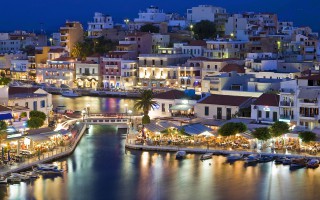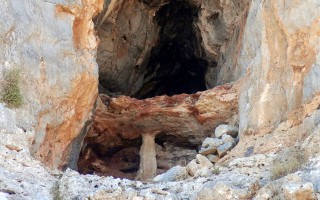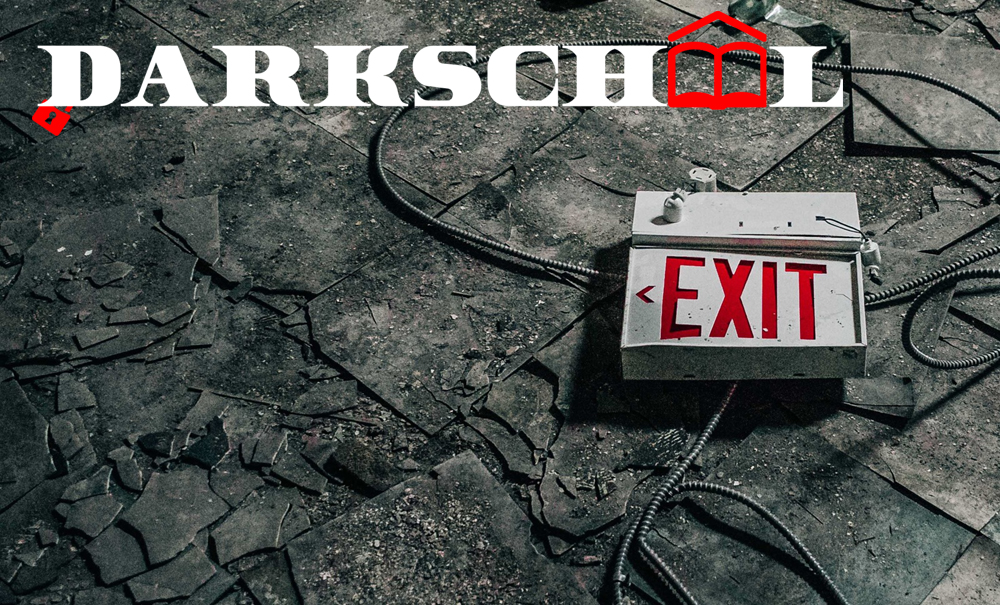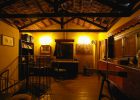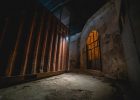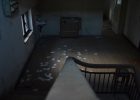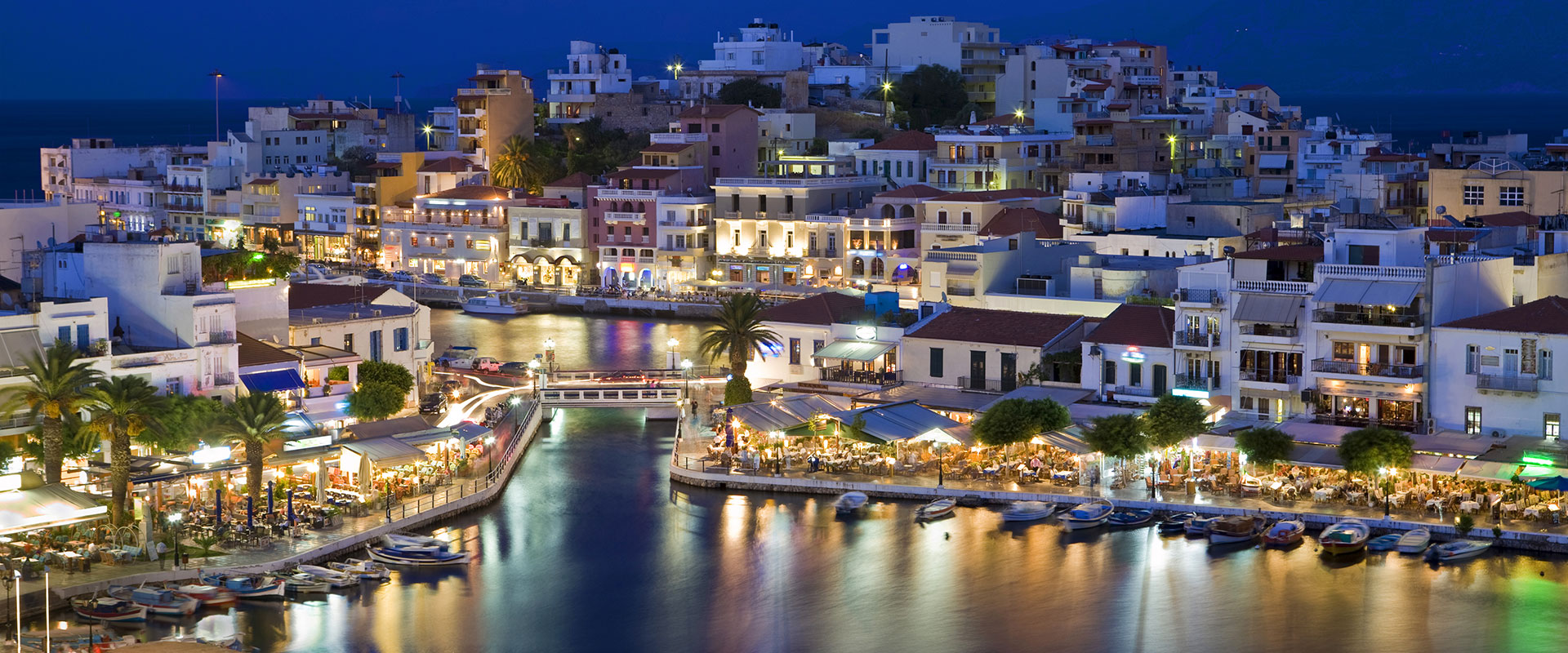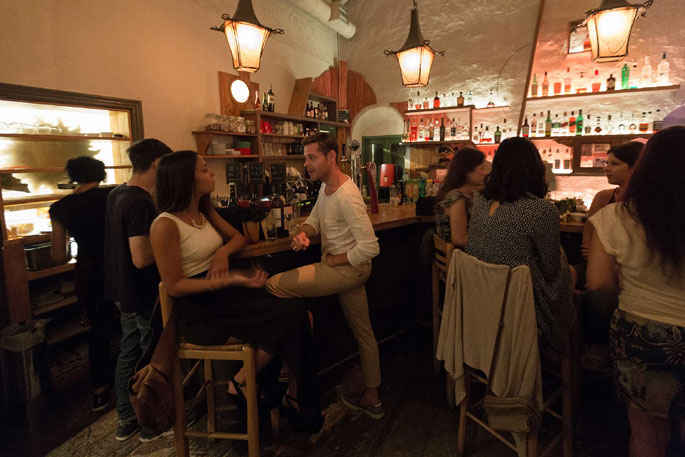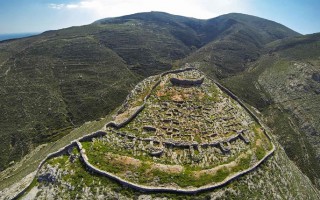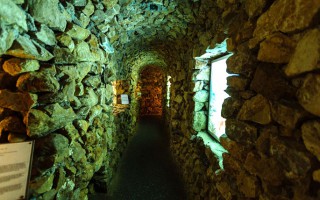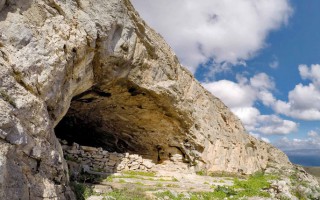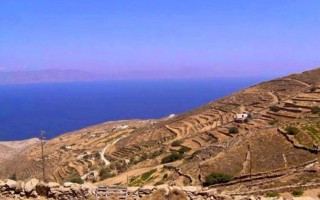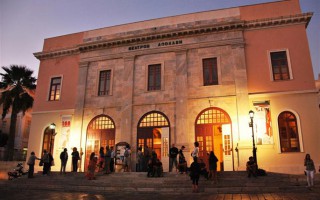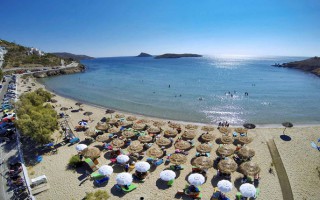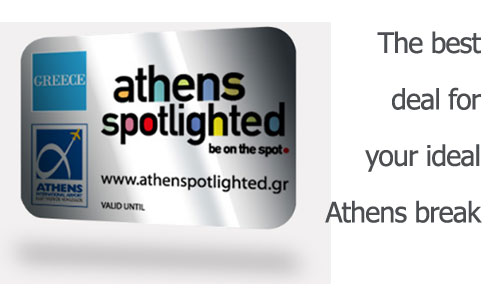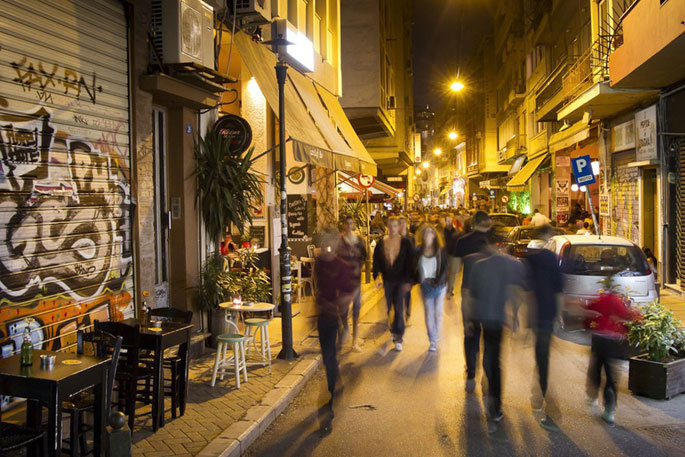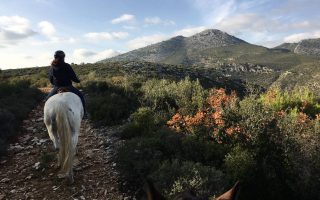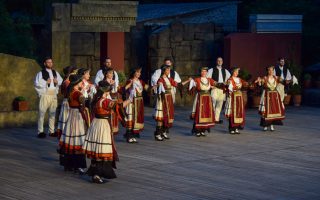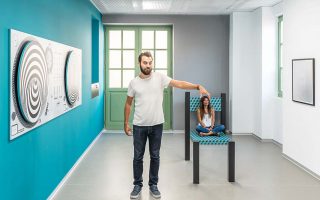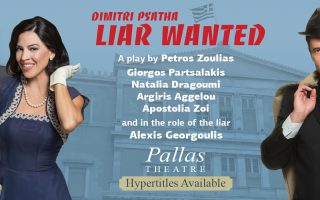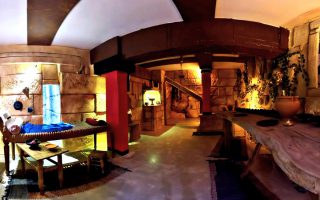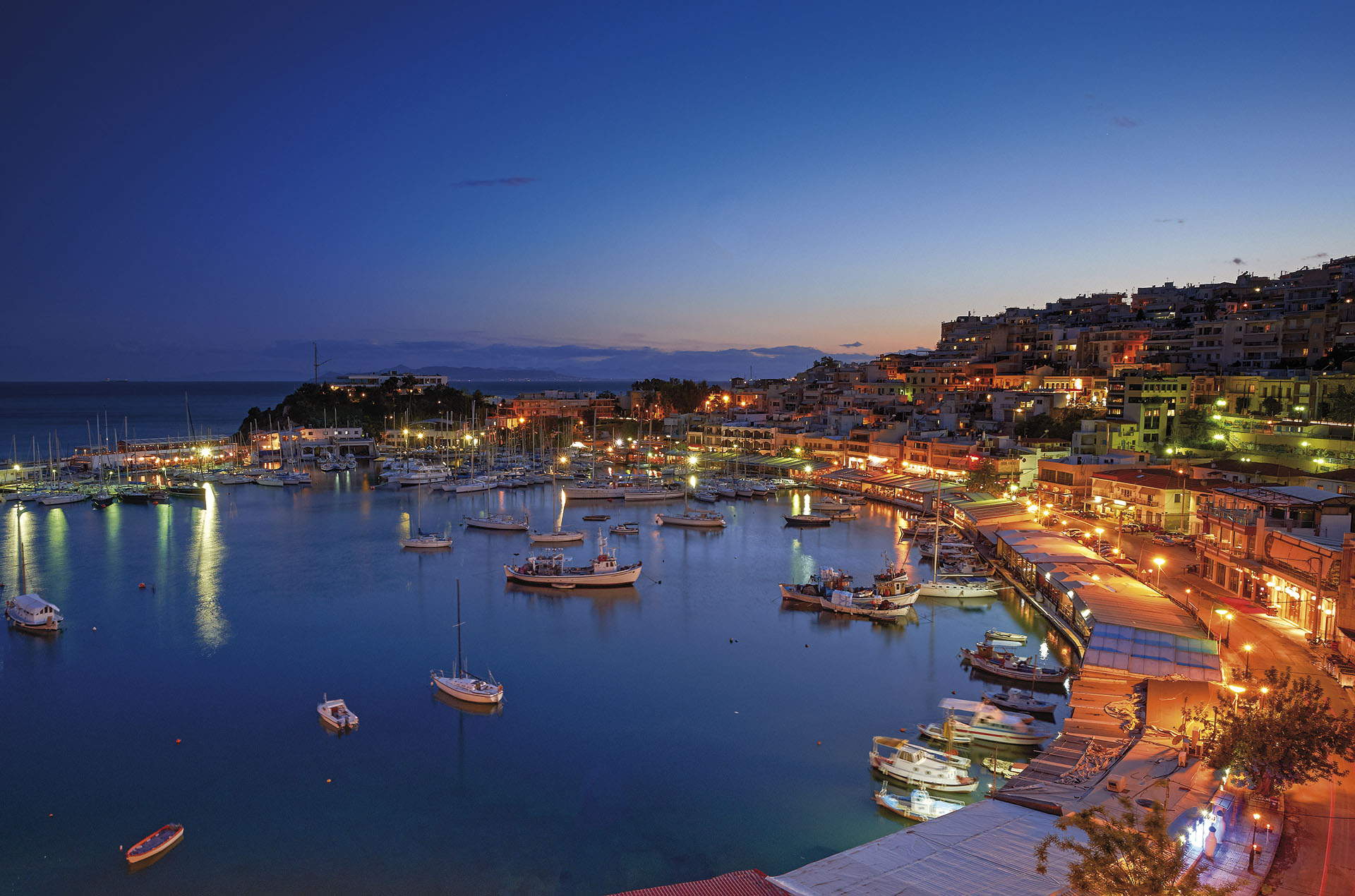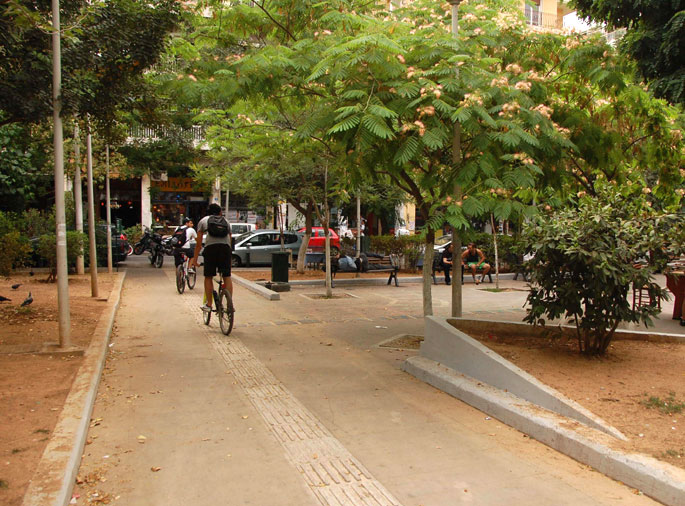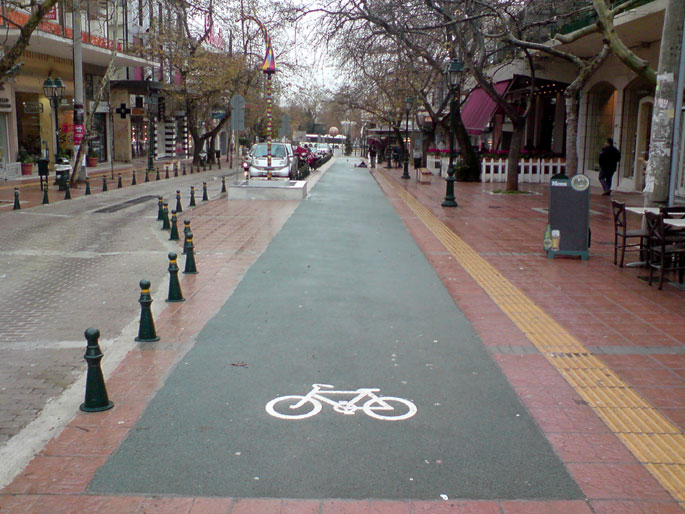When the Sitia region became a member of the UNESCO Geopark family, we had no idea just how much positive change this would bring!
This new aspect of tourism “Sitia Geopark”, is proving to be a considerable point of interest, especially in the alternative tourism market. The natural environment is no longer an obstacle for tourism development, on the contrary it is a great attraction for visitors.
We are seeing increasing interest in our Geopark from our customers, both individuals and tour operators from all over Europe. Sitia Geopark recently took part in online exhibitions’ of alternative tourism with Belgium, Poland, UK, Germany and France. We spoke with tour operators, journalists and travel writers. This type of tourism was something new to many of them and we detected great interest.
This is because our new venture is different and better than anything previously on offer!
Before our area was designated as a Geopark, the tourism product sold by the area of Sitia was Crete’, as promoted by all the island – Chania, Rethymno, Heraklion etc. Impossible competition!
“Sitia Geopark” is a totally new autonomous venture, found only in our area, fully compatible with alternative forms of tourism. It seems therefore that our region is slowly beginning to take a leading role, by fulfilling the needs of the modern tourist. The classic product of mass tourism and the trio of sun, sea and antiquities has completed its life cycle in these changing times and is naturally evolving into special and selective, ie alternative forms of tourism.
But what is “alternative tourism”?
And I quote the most appropriate description I can find: “Alternative tourism is the form of tourism, which is compatible with the social and environmental values of the region allowing both the local society and visitors to enjoy positive, worthwhile interaction and shared experiences. In other words, “alternative tourism” is the development that meets the needs both of the visitors and the region.
Three forms of alternative tourism have been developed and sold as package holidays to offices abroad in the last 12 years within the “Sitia Geopark” area.
The 1st alternative form of tourism is “walking tourism”. Over 25 marked routes are available with packages including accommodation, transportation, and guided tours for individual visitors as well as small groups of 6-15 people.
The 2nd form of alternative tourism – the largest alternative programme in our area for the last 18 years – is the sport of Windsurfing, which takes place on the beach of Kouremenos, Palekastro. The package includes accommodation in Palekastro area, transport and equipment (boat, sails) supplied by the 2 windsurfing stations located on the beach.
The 3rd form of alternative tourism is “cycling tourism”. Over 7 marked cycling routes are available within the Geopark area. The packages include accommodation in the area, transport and supply of city or mountain bike for individual customers or small groups of 6-15 people.
We are expecting a 4th very promising form of alternative tourism, “diving tourism”, to be added to our area with the creation of a diving park in the near future.
If asked today what the future tourism model for an area would be, I would say, 30% mass tourism and 70% alternative forms of tourism. The areas where mass tourism has prevailed show us that the above ratio is very difficult to achieve. To this end, we should consider the actual capacity of the area and we certainly need the support of government and the municipality.
Why choose 30% mass tourism? Mass tourism obviously controls the airlines and handles millions of people. Even though it creates many negatives in the host areas (for example Malia, Hersonissos, Faliraki, Rhodes, etc.), it also has 2 positives that we need in our area:
1) Direct flights from abroad to Sitia International Airport, offering easy and quick access to the destination and reduced package costs for customers.
2) New job opportunities in hotels/tourism for young people.
And why 70% alternative forms of tourism?
1) As far as revenue is concerned, one customer of alternative tourism equals
10 mass tourism customers.
2) It is more resistant to crises and pandemics. For example, regardless of the
Covid-19 pandemic, generally speaking small hotels, villas and apartments
in areas less developed developed continued to operate at a much lower
loss, whereas many large hotels and resorts remained closed in 2020 and
may well not open in 2021.
3) Not easily blackmailed by big tour operators.
4) Eco-friendly and local population-friendly as opposed to mass tourism.
5) The relationship between humans and the natural environment is restored.
6) Sustainable tourism development is created, by answering both the needs
of visitors and host areas, while protecting and increasing future
opportunities.
7) The local community profits the most as opposed to 2-3 people in the case
of mass tourism.
8) Repeat customers are created.
9) It attracts those in the high-end market with high standards, who would
never consider mass tourism.
This is dedicated to our future generations!
In no way do we want our actions of today to limit the ability of future generations to fulfill their own needs!
Kind regards
George Belibasakis
Web: https://www.sitia-geopark.gr/
TourMap: https://tours.nhmc.uoc.gr/geo/sitia/
A well-kept secret lies inside the secret facilities at the heart of Silk City. The people are starting to ask questions. Something’s not right about this building. For years, all they would see were strange, secretive human figures, meeting with the scientist who had made this building his permanent residence, only rarely leaving the premises.
 The object of those meetings was kept entirely secret, leading to much speculation as well as theories about what took place inside the building’s walls. However, over the last few days, something even stranger has occurred. Wild cries and strange sounds filled the night, and many people exited the building’s main gate in a state of panic. The cries became increasingly wilder, until they melded into a deafening roar that had nothing human about it…
The object of those meetings was kept entirely secret, leading to much speculation as well as theories about what took place inside the building’s walls. However, over the last few days, something even stranger has occurred. Wild cries and strange sounds filled the night, and many people exited the building’s main gate in a state of panic. The cries became increasingly wilder, until they melded into a deafening roar that had nothing human about it…
You Are Locked Inside
After the door slams behind you, your only tools are your mind and any items present in the room that might aid in your escape!
The Clock Is Ticking
You have 90 minutes to try and solve all the riddles and discover what truly happened… But beware, for you are not alone inside the room!
Get in the Mood
The rooms are built in order to evoke a specific mood, to create a feeling that will render your experience as realistic as possible.
Contact
If you want to visit our rooms or organize an event, contact us.
- Victor Hugo 32 Athens-Metaxourgio
- +30 21 1215 1967
- info@darkschool.gr
- www.darkschool.gr
Any place in Crete is sure to fascinate visitors. The island is reputed for its amazing mosaic of landscapes – each one, however, retaining its own character, its own identity and beauty. The eastern part of Lassithi is considered to be the low-key aspect of Crete, one of peace, quiet, things being done in a relaxed way, hospitality.
It is the corner of Crete with the even-tempered mountains, the “smiling shores”, the fine beaches and the countless Blue Flag beaches. Not to mention the dunes in its south coastline and on its small islands in the Libyan sea, and the hot and life-giving sun shining for almost three thousand hours a year − the highest annual sunlight average in Europe!
Lassithi is the Crete of large and renowned ancient cities, Minoan palaces and ports , medieval monuments, traditional villages, unique landscapes, immense olive groves, verdant vineyards, gardens, orchards. It is a place having to offer enchanting cultural and nature-loving treks to canyons, caves, forests, agricultural landscapes, ancient paths, habitats, monuments, castles, monasteries, countryside churches, villages. A place with a long tradition in tourism, high-quality services, excellent resorts renowned the world over, hotels having received numerous distinctions internationally, and all sorts of outstanding tourist accommodation, built at unique locations.
A decentred and, at the same time, “multi-centred” structure is one of the most characteristic features of Lassithi. There are four towns in the area – beautiful, functional, and full of life and movement. Agios Nikolaos is built on five small hills and known for its picturesque lake, indented coastline and cosmopolitan colour. Ierapetra, with its Kale fortress, its immense sandy beach, its spaciousness and its never-ending summer, claims the title of the “nymph of the Libyan sea”. Sitia, with an amphitheatric layout, the Kazarma fortress, the picturesque old town, a vivid island colour and a strong sense of the sea, is the town of high spirits and fun. And Neapoli, with its fine and functional square, long historical tradition, old mansions and peaceful environment, is the town of intellect and literature.
The greatest advantage of Lassithi is that, no matter which part of it one may be at, one can, in a very short while, find oneself in a town or beach! Thus, all the visitors of the area, even those who are staying at mountain villages, can very easily have access to services, town living and the area’s sublime beaches. But the reverse is also the case: those who live in the towns have, very close to them, beautiful and cool villages with traditional taverns and coffee shops, picturesque back streets and squares, old churches and houses, and of course these follow the old paces of life, those of calmness and slowness, of a philosophical disposition and of the traditional hospitality. Such are the seaside villages of Sissi, Milatos, Elounda, Plaka, Kalo Chorio, Mochlos, Palekastro, Zakros, Kserokambos at Ziros, Goudouras, Makris Gialos, Koutsouras, Achlia, Agia Fotia, Ferma, Koutsounari and Myrtos at Ierapetra. In the inland, such is the Lassithi Plateau with Tzermiado and Agios Georgios, Kritsa near Agios Nikolaos, the Chandra – Ziros Plateau, the unadulterated villages of the Sitia province, etc.
Source: www.incrediblecrete.gr
The cosmopolitan island of Syros is a picturesque island offering various choices of entertainment for all tastes and preferences. From the atmospheric cafés and bars in the capital, Ermoupolis, to the beaches of Galissas, and Poseidonia all the way to Ano Syros with its romantic pool bars overlooking the endless Aegean Sea, Syros is an island with an effervescent character. With the clubs in the heart of the city and the timeless nightlife, Syros promises to elevate the mood of all visitors. For every traveller wondering what to do while on the island the answer lies in the island’s entertainment guide providing detailed information about the nightlife in Syros, Syros’s attractions and also the several other alternative activities.
Along the picturesque streets of Ermoupoli, travellers are invited to relax in one of the café’s down the port, overlooking the magnificent sea, stroll around in the picturesque neighbourhoods with their neoclassical mansions and enjoy a refreshing cocktail in a bar of their choice while the sky overflows with the colours of the sunset. As the night begins to fall on the cosmopolitan capital, the flickering city lights add an extra glow to the island’s effervescent night time scene.
Syros Entertainment Guide: www.syrosisland.gr/places/syros-by-night/
Source: www.syrosisland.gr
Athens International Airport with the support of the city guide magazine “Athinorama”,
welcomes you to the “athenspotlighted” programme!
Be on the Spot and discover the unique character, history and cosmopolitan atmosphere of our city through ideal deals! Through “athenspotlighted” programme you are provided with a free discount city card, which can be used at various cultural sites, museums, art galleries, restaurants, night clubs and a wide variety of selected stores all over Athens. Benefits and discounts, as well as the involved spots and all relevant information can be found at programme’s dedicated site www.athenspotlighted.gr
Make sure that you collect your free city card upon your arrival at the Central Information Counter (Arrivals Level). Athens Spotlighted card is a promotional card for the city of Athens intended for the use of its international visitors. The card provides you with special discounts and benefits at our city’s best spots.
Enjoy your stay in Athens!
Website: www.athenspotlighted.gr
διαβάστε περισσότερα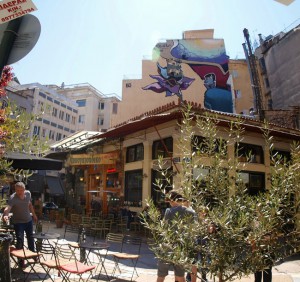 First mentioned in 1678 by the traveller Spohn as one of Athens’ eight original neighbourhoods, Psyrri is one of the city’s oldest and most historic areas. Framed by Athinas, Ermou, Pireos, and Evripidou Streets, it was established under Ottoman occupation, after Athens was selected as the capital of Greece.
First mentioned in 1678 by the traveller Spohn as one of Athens’ eight original neighbourhoods, Psyrri is one of the city’s oldest and most historic areas. Framed by Athinas, Ermou, Pireos, and Evripidou Streets, it was established under Ottoman occupation, after Athens was selected as the capital of Greece.
ΠDeveloped by wealthy aristocrats who settled here in neoclassical, two-storey homes, the area later began to attract a new crowd, including members of the koutsavakides, a notorious gang of louts who frequented the taverns of Iroon Square.
But history is never static, and today Psyrri is thriving, its youth clubs, ouzo bars, taverns and cafes attracting multitudes of Greek and foreign visitors. The area is famous for its annual Easter bazaar, which offers everything from agricultural and livestock products to leather goods.
Source: www.athensattica.gr
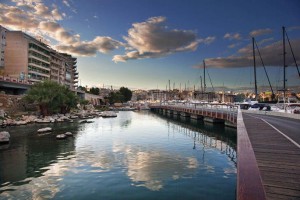 The sea breeze has always made Piraeus a special place to visit. Greece’s largest port is well worth exploring, and there’s no better way than by strolling along streets of Peiraiki, Freatyda, Pasalimani and Kastella.
The sea breeze has always made Piraeus a special place to visit. Greece’s largest port is well worth exploring, and there’s no better way than by strolling along streets of Peiraiki, Freatyda, Pasalimani and Kastella.
In neighbouring Zea, home to some of Attica’s most lavish yachts and sailing boats, you can enjoy an afternoon coffee or ouzo. Within short walking distance of Zea, the picturesque port of Mikrolimano, with its waterfront tavernas serving the freshest fish dishes, will give you that incomparable Greek-island feeling.
Destination Piraeus project
Video/presentation by Experience Greece team
Director: Panos Georgiou
Piraeus offers much more than great food. The shops lining its streets are a testament to its long commercial history. Fashion boutiques dominate the shopping scene, and you’d be hard-pressed to find a greater variety of clothes, shoes and accessories.
Given the tiring nature of shopping, start your excursion with a freshly baked koulouri from sellers roaming the city from Iroon Polytechniou to Sotiros Dios Street.
Along the central thoroughfares of Iroon Polytechniou, Vassileos Georgiou and Grigoriou Lambraki, you’ll find many famous-brand shops as well as stores that offer more affordable gifts. Iroon Polytechniou is the main drag in Pireaus, playing home to the grand Dimotiko Theatro. The largest commercial street is Sotiros Dios, which starts at the port and ends at Pasalimani and has a pedestrian zone.
Clothing shops line the street and you’ll always find something in your price range. Many smaller streets (Kolokotroni, Karaiskou, Praxitelous, Alkiviadou and Ypsilandou) intersect this pedestrian zone and all offer great shopping.
Shoe shopping on a tight budget? You’ll find a wide variety of footwear on Filonos Street, while the seaside street along the port is perfect for souvenirs. If jewellery is your thing, Vassileos Georgiou Street, which starts from Aghia Triada and ends at the Dimotiko Theatro, offers many shops with fine items in silver or gold.
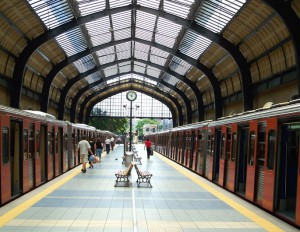 On the stretch from Korai Square to Grigoriou Lambraki Boulevard you’ll find top-quality clothes, shoes and accessories. On Grigoriou Lambraki Boulevard, clothing shops give way to stores selling household items, such as carpets, rugs and electrical appliances.
On the stretch from Korai Square to Grigoriou Lambraki Boulevard you’ll find top-quality clothes, shoes and accessories. On Grigoriou Lambraki Boulevard, clothing shops give way to stores selling household items, such as carpets, rugs and electrical appliances.
Tsamadou Street is another destination and just a stone’s throw from Dimotiko Theatro. Here you’ll find a variety of shops selling everything from clothes and books to spices and travel accessories.
You’ll find the great Pireaus Food Market on the corner of Gounari Street and Tsamadou Street, which offers a wide variety of meat, fish, poultry, vegetables, spices and medicinal herbs. Take a break at Korai Square, where you’ll find delightful cafés, pizzerias and traditional tavernas.
Source: www.athensattica.gr
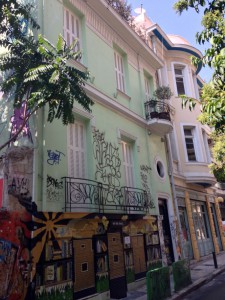 Formed after the liberation of Athens from the Turkish occupation, Exarhia was one of the first new districts established in the city. Located at the foot of Strefi hill, the district is bounded by Ippokratous, Kallidromiou, Bouboulinas and Solonos Streets.
Formed after the liberation of Athens from the Turkish occupation, Exarhia was one of the first new districts established in the city. Located at the foot of Strefi hill, the district is bounded by Ippokratous, Kallidromiou, Bouboulinas and Solonos Streets.
Previously known as Pytharadika, after the laboratories on the banks of the Kyklovoros River, the area later adopted the name of Exarhos, from a respected grocer from Epirus who ran his business here on Themistokleous Street for many years.
In the mid-19th century, the district was absorbed into the city’s urban planning, and began to develop rapidly. The area’s narrow streets, first built following the Revolution of 1821, were home to student riots in 1901 as well as major battles during World War II.
Today, due to its close proximity to both the University of Athens and the Technical University, the area is filled with students. Exarhia Square was developed around 1959 and features the Blue Building, the old Vox cinema, the Floral cafe and many other interesting landmarks.
Tailored to the students and scholars who live here, the district is also filled with bookstores, and press and publishing houses. Although the area has been somewhat neglected in recent years, its inhabitants and shop owners are making every effort to restore it to its previous character.
Source: www.athensattica.gr
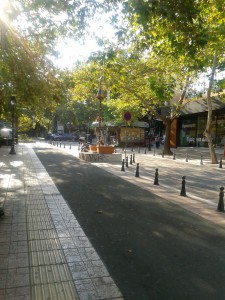 This prestigious district near the terminus of the metro line has always been one of the city’s most important commercial districts. Located 15 kilometres north-east of Athens, this suburb was established in the late 19th century as a countryside resort for the Athenian upper class.
This prestigious district near the terminus of the metro line has always been one of the city’s most important commercial districts. Located 15 kilometres north-east of Athens, this suburb was established in the late 19th century as a countryside resort for the Athenian upper class.
Since then it has become the preferred residential area of entrepreneurs, artists and statesmen. With a number of open green spaces and recreational sites like Kefalari and the Alsos Green, Kifissia offers a uniquely relaxing ambience.
At the Kifissia shopping centre, visitors will find the most famous brand names in clothing, shoes, cosmetics and accessories, as well as a wide array of luxury hotels, cafés, gastronomy and some terrific old taverns. Consider combining a leisurely stroll with some designer shopping and a bit of fine dining.
Source: www.athensattica.gr
Known in ancient times as Aixone, Glyfada was renowned for the red-mullet fishing off the coast. Located 15 kilometres southeast of Athens, the coastal suburb of Glyfada is one of the region’s major marketplaces. Lying parallel to the tram lines, the central commercial district is surrounded by a number of important businesses.
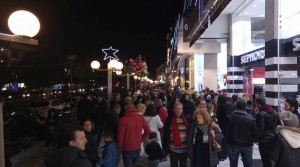 In this stunning seaside locale visitors will find major shopping centres offering brand-name clothing, footwewar, cosmetics and accessories. Easily accessible by bus and tram, there are also a number of marinas available to serve visitors arriving by boat.
In this stunning seaside locale visitors will find major shopping centres offering brand-name clothing, footwewar, cosmetics and accessories. Easily accessible by bus and tram, there are also a number of marinas available to serve visitors arriving by boat.
Source: www.athensattica.gr
- 1
- 2

